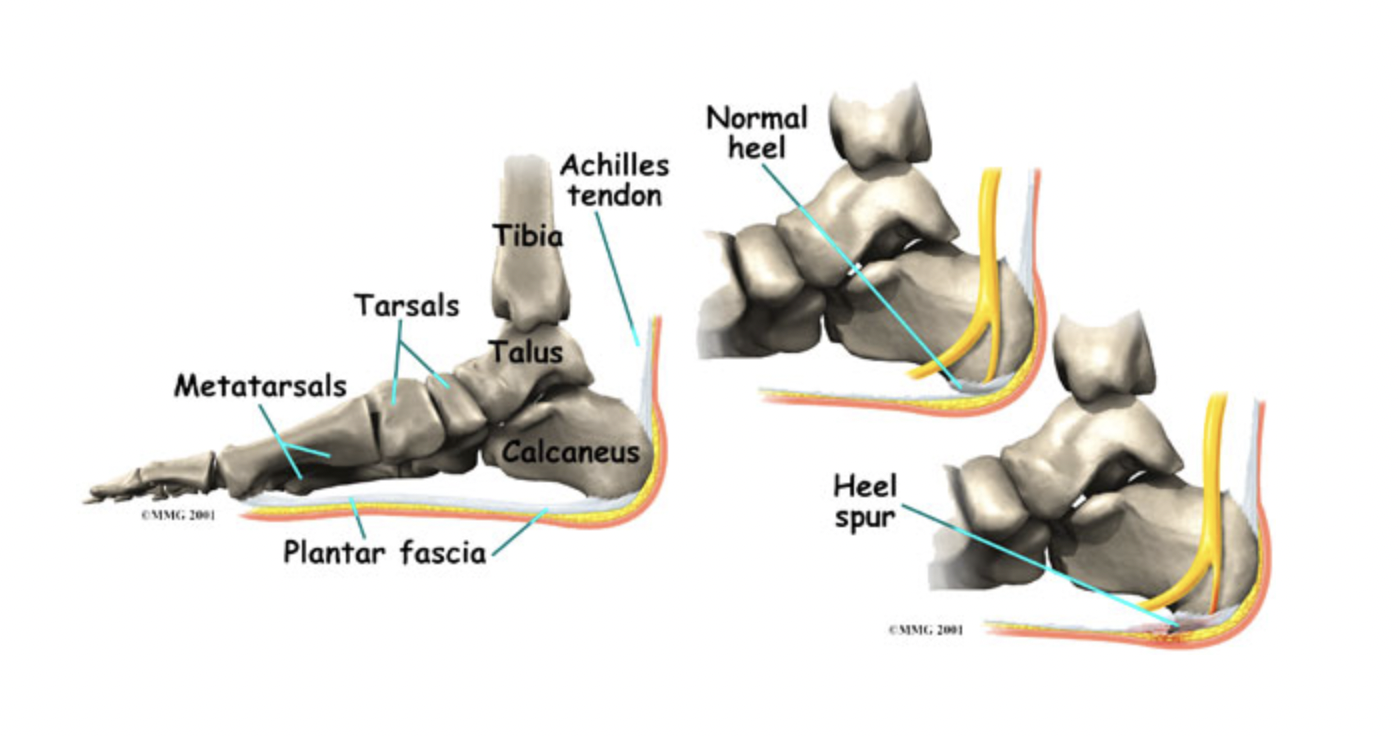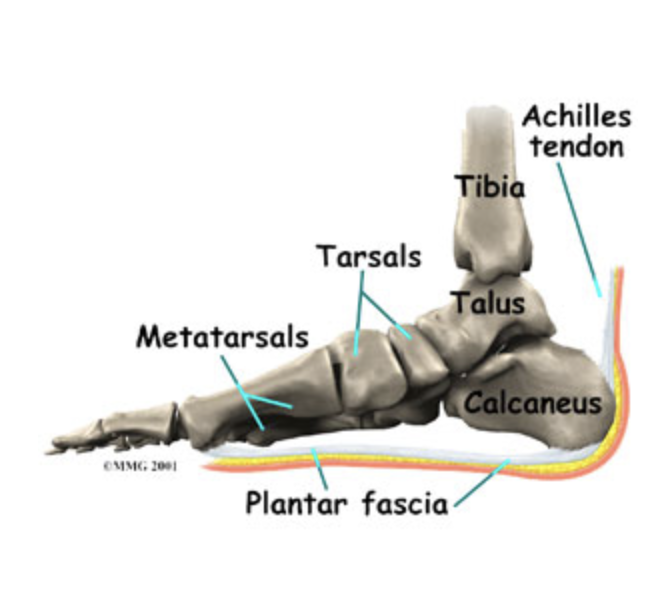Northern California Treatment for Plantar Fasciitis

Introduction
Plantar fasciitis, sometimes called a heel spur, is a condition that causes pain on the bottom of the heel when putting weight on the foot. There can be many underlying causes of heel pain, and sometimes finding the precise reason for the pain can be difficult. Even so, several options are available for treatment.
Anatomy
The plantar fascia is a band of tissue, similar to a tendon, which runs from the front of the heel bone (calcaneus) to the ball of the foot. This dense strip of tissue helps to support the arch of the foot.
When the foot is on the ground the full weight of the body is concentrated on the plantar fascia. This force stretches the tissue as the arch of the foot tries to flatten from the weight of the body. This leads to stress on the plantar fascia where it attaches to the heel bone. Small tears of the fascia can happen. However, the body normally repairs these tears.
As this process of injury and repair repeats itself over and over again, a bone spur (a pointed outgrowth of the bone) sometimes forms as the body’s response to try to firmly attach the fascia to the heel bone.

Causes
Heel pain from plantar fasciitis can have several causes. In rare cases, the heel spur can be so big it causes pain. The chronic inflammation of the fascia itself may be the source of pain. As we age, the fat pad that makes up the fleshy portion of the heel becomes thinner and degenerates. This can lead to inadequate padding on the heel and chronic pain in this area. The small nerves that travel under the plantar fascia on their way to the forefoot can also become irritated and may contribute to the pain.

Symptoms
Heel pain from plantar fasciitis can have several causes. In rare cases, the heel spur can be so big it causes pain. The chronic inflammation of the fascia itself may be the source of pain. As we age, the fat pad that makes up the fleshy portion of the heel becomes thinner and degenerates. This can lead to inadequate padding on the heel and chronic pain in this area. The small nerves that travel under the plantar fascia on their way to the forefoot can also become irritated and may contribute to the pain.
Diagnosis
Doctors can usually diagnose plantar fasciitis based on your medical history and physical examination. There are several conditions that can cause heel pain, and plantar fasciitis must be distinguished from these conditions.
An X-ray may be ordered to rule out a stress fracture of the heel bone and to see if a heel spur is present. Laboratory investigation may be necessary in some cases to rule out other illnesses that can cause heel pain, such as rheumatoid arthritis, Reiter’s Syndrome, or ankylosing spondylitis. These are diseases that affect the entire body, but may show up first as heel pain.
Treatment
Conservative Treatment
The treatment of heel pain usually begins with adjustments to our shoes to try and reduce symptoms. A special type of insert, called a heel cup, can reduce the pressure on the sore area and add padding to cushion the heel. Supporting the arch with a well-fitted arch support, or orthotic, may help reduce the pressure on the plantar fascia. Additionally, exercises may be prescribed to help treat the problem.
Anti-inflammatory medications are sometimes used to decrease the inflammation in the fascia and reduce the heel pain. An injection of cortisone may also be effective in reducing pain. Cortisone should be used sparingly since it may contribute to the process of degeneration of the fat pad, actually making the problem worse.
Surgery
Surgery is a last resort in the treatment of heel pain. Physicians have developed many procedures to try to cure heel pain. The procedure commonly used today focuses on several areas:
- Remove the heel spur
- Release the plantar fascia
- Release pressure on the small nerves in the area
Usually the procedure is done through a small incision on the side of the foot. Some surgeons now perform this type of surgery using an endoscope. An endoscope is a small TV camera that can be inserted into a joint or under the skin to allow the surgeon to see the structures involved in the surgery. By using the endoscope, a surgeon can complete the surgery with a smaller incision and presumably less damage to normal tissues. There is no clear evidence about whether an endoscopic procedure for this condition is better than the traditional small incision.
Surgery usually involves identifying the area where the plantar fascia attaches to the heel and releasing the fascia partially from the bone. If a small heel spur is present, it is removed. The small nerves that travel under the plantar fascia are identified and released from anything that seems to be causing pressure on the nerves. This surgery can usually be done on an outpatient basis, meaning a patient may be able to leave the hospital the same day.
Rehabilitation
Once the surgery is complete, it will take several weeks before the tissues are well healed. A bandage or dressing is usually worn for about a week following the procedure. Stitches are removed ten to fourteen days following the procedure. If a surgeon chooses to use dissolvable sutures, these will not need to be removed. A plantar fasciitis patient will probably use crutches briefly, and a physical therapist may be consulted to help them learn to use their crutches properly.
